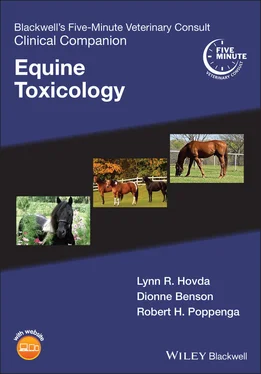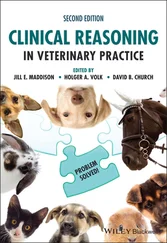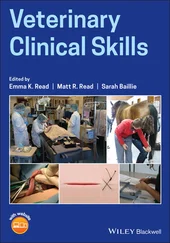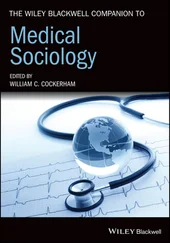Renee Schmid, DVM, DABT, DABVTSenior Veterinary Toxicologist DVM Supervisor Pet Poison Helpline & Safetycall International, PLLC Bloomington, MN, USA
Mary Scollay, DVMExecutive Director Racing Medication Testing Consortium Lexington, KY, USA
Arya Sobhakumari, DVM, PhD, ERT, DABT, DABVTResearch Scientist – Quality and Applied Science Nestle Purina PetCare 1 Checkerboard Square, 3S St. Louis, MO, USA
Bryan L. Stegelmeier, DVM, PhD, DACVPResearch Medical Officer USDA Poisonous Plant Research Laboratory Logan, UT, USA
Ashley Smit, DVMConsulting Veterinarian, Clinical Toxicology Pet Poison Helpline & Safetycall International, PLLC Bloomington, MN, USA
Patricia A. Talcott, MS, DVM, PhD, DABVTClinical Professor, Dept. of Integrative Physiology and Neuroscience Toxicology Section Head, Washington Animal Disease Diagnostic Laboratory Pullman, WA, USA
Christie Ward, DVM, MVSc, PhD, DACVIMAssistant Clinical Professor College of Veterinary Medicine University of MinnesotaSt. Paul, MN, USA
Katherine D. Watson, DVM, PhD, DACVPAssistant Professor of Anatomic Pathology California Animal Health and Food Safety Laboratory System School of Veterinary Medicine University of California Davis, CA, USA
About the Companion Website
This book is accompanied by a companion website:
www.wiley.com/go/hovda/equine
The Website includes:
Figures from the book
Appendix 3– Information Resources for Toxicology
section I Clinical Toxicology
Chapter 1 Forensic Investigation of Equine Intoxications
 DEFINITION/OVERVIEW
DEFINITION/OVERVIEW
Determining underlying causes for sudden or unexplained equine deaths has significant medicolegal importance. Potentially all horses are at risk, but horses are less commonly intoxicated than other species due to more selective dietary habits, more controlled environments, and more observant owners.
Clues that might point towards an intoxication include sudden death of one or more otherwise healthy horses, recent feed or environmental changes, easy access to chemical storage areas or trash piles, access to areas with potentially toxic plants, or threats of poisoning.
Malicious poisoning does occur due to disputes or in situations in which animals are insured or involved in some form of competition.
Determining the cause and manner of death is critical to substantiating claims and the ultimate liability of insurers.
A systematic and thorough postmortem examination is essential to confirm death caused by toxicant exposure.
Documentation (e.g., use of chain‐of‐custody procedures) of proper sample collection, storage, and laboratory submission is crucial, especially with accidental feed contamination or malicious poisoning suspicions.
Toxicant testing can be targeted (i.e., testing for specific toxicants) or non‐targeted (i.e., looking for unknowns). While non‐targeted testing can identify many toxicants, there is no single comprehensive test for unknowns.
It is important to keep an open mind when investigating the death of any animal and not to be misled by allegations of malicious intent.
 SIGNALMENT/HISTORY
SIGNALMENT/HISTORY
Exclusive of plants for which ingestion is associated with sudden death, potential toxicants include strychnine, phosphides, cholinesterase‐inhibiting insecticides (e.g., OPs, carbamates), nicotine, metaldehyde, cyanide, fluoroacetate, illicit drugs (e.g., amphetamines, cocaine, heroin, morphine), metals (e.g., mercury, arsenic, lead, selenium, iron), drugs (e.g., insulin, barbiturates, reserpine, succinylcholine), electrolytes (e.g., potassium, calcium) and vitamins A, D, and E.
Ingestion of toxic plants is a less common cause of malicious poisoning but still a possibility. Exposure to extremely toxic plants (e.g., Taxus spp. [yew], Nerium oleander [oleander], Conium maculatum [poison hemlock], Cicuta spp. [water hemlock]) should be considered, as should zootoxins (e.g., cantharidin).
 CLINICAL FEATURES
CLINICAL FEATURES
Signs vary considerably depending on the specific toxicant to which a horse is exposed.
Most malicious intoxications are associated with administration of highly toxic drugs or chemicals intended to kill quickly.
An ideal toxicant used maliciously would cause rapid death, not result in specific postmortem lesions, and be difficult to detect in postmortem tissue or fluid samples. Fortunately, the list of toxicants meeting all three criteria is rather limited.
Most toxicants that result in sudden death impair the central or peripheral nervous systems, cardiovascular system, or respiratory system. Thus, if signs are noted before death, they generally relate to failure of one or more of these systems.
Intoxications can result in more chronic disease and multiple exposures might be required before onset of clinical signs (e.g., ingestion of pyrrolizidine alkaloid‐containing plants).
Depending on the toxicant, there might be evidence of struggle before death, as might occur following central nervous system (CNS) stimulation or respiratory impairment. Alternatively, some toxicant‐induced deaths are associated with no struggle before death, as might occur after administration of a barbiturate or other CNS depressant.
 DIFFERENTIAL DIAGNOSIS
DIFFERENTIAL DIAGNOSIS
There are many causes of sudden or unexplained death other than toxicants:
Physical causes – trauma, electrocution, lightning strike, suffocation, heat stroke, and gunshot.
Natural or genetic causes – hyperkalemic periodic paralysis, cardiac conductive disturbances, acute myocardial necrosis, cerebral thromboembolism, aortic aneurysm or other vessel rupture, and neoplasia.
Infectious or parasitic causes – acute clostridial diseases, salmonellosis, Tyzzer’s disease, anthrax, equine monocytic ehrlichiosis, foal actinobacillosis, babesiosis, and verminous arteritis.
Metabolic and nutritional causes – hypoglycemia, hypocalcemia, hypomagnesemia, and selenium or vitamin E deficiencies.
 DIAGNOSTICS
DIAGNOSTICS
CBC/Serum Chemistry/Urinalysis
When possible, collect whole blood, serum, plasma, and urine before death for routine clinicopathologic tests; this helps to delineate pathophysiologic processes, which aids in refining an initial differential list.
In addition to samples collected for clinicopathologic testing, other samples for toxicologic analysis include stomach contents, urine, liver, kidney, brain, eyeball, and heart blood. Given the delay in the possible incorporation of a chemical into hair, hair samples are not generally useful for testing.
With any suspicion of an injection site, obtain tissue from around that site.
Collect representative feed and water samples.
Submit plants for identification if necessary (submit fresh whole plants, wrap plant [at least the base of the plant] in moistened paper towels, place in a plastic bag and keep chilled; representative samples of hay can also be collected for identification of contamination).
Читать дальше

 DEFINITION/OVERVIEW
DEFINITION/OVERVIEW SIGNALMENT/HISTORY
SIGNALMENT/HISTORY CLINICAL FEATURES
CLINICAL FEATURES DIFFERENTIAL DIAGNOSIS
DIFFERENTIAL DIAGNOSIS DIAGNOSTICS
DIAGNOSTICS










